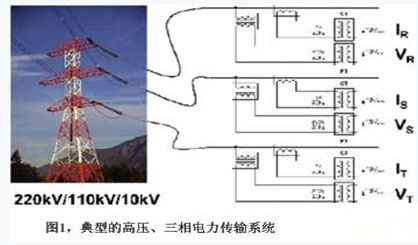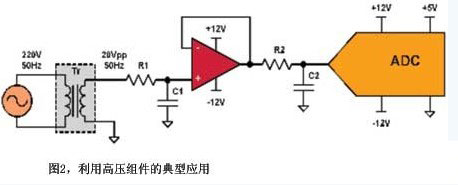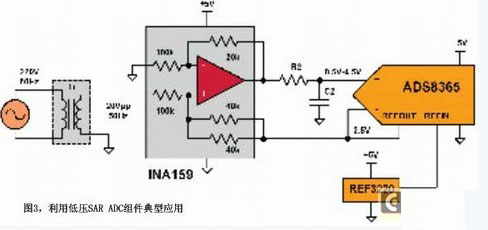At present, the industrial market is showing a trend of higher power utilization, which requires continuous improvement of the monitoring of the power system. Proper management and distribution of power supplies is important for energy efficiency and overall power utilization in the industrial sector. Accurate, real-time measurements are especially important when making decisions and ensuring proper protection of the transmission grid and end users.
Figure 1 shows a typical high voltage power transmission system when three phase inrush currents must be measured. The resulting very high voltage must be isolated and attenuated to match the low voltage measurement and the input capacity of the corresponding control system. The first stage of high voltage isolation is performed by the power transformer. For example, a 220 kV voltage from a power station can be converted to a lower level of only 220V. Since this voltage is still too large for the current analog-to-digital converter (ADC), further three-phase isolation is required. The next step is to convert the 220V voltage into a measurable ±10V signal to provide the necessary control and protection circuitry. Load current measurement also requires the same isolation, measurement, control, and protection; the above operation can be repeated by a high voltage transformer to reduce the voltage.

Although the input frequency is relatively low, the timing of each measurement is very important. This configuration allows us to measure multiple channels simultaneously.

One of the more common solutions for voltage and current measurement is the use of high voltage components. The signal from the transformer or converter is filtered and buffered by an operational amplifier. There must be a resistor and capacitor (RC) filter between the transformer and the op amp to limit the voltage spike and input current. Figure 2 shows A typical application circuit using this configuration.
R1 and C1 filter out voltage spikes that can be generated by the transformer. Input resistor R1 also helps limit transient input current and protect the op amp's high-impedance, non-inverting input pins. The op amp is temporarily isolated from the charge injection device by filtering again with R2 and C2. Charge injection devices are typically associated with current successive approximation register (SAR) architecture ADCs. In this way, the output voltage of the transformer (typically 20 Vpp or ±10 Vpp) can be buffered and passed to the ADC input.
However, this simple circuit also has some drawbacks. First, three power supplies must be used for this circuit to work properly (which is also the biggest drawback): the op amp and the analog portion of the ADC require a ±12 V supply, and the processor interface requires a 5 V supply. These three power supplies must be dedicated to the analog measurement portion of the circuit and cannot be derived from any noisy auxiliary power source used for digital processing or relay drivers. At the same time, these requirements make board layout extremely complex and inevitably increase the design cost of multilayer printed circuit boards (PCBs). The second problem is the limited number of components: only a few manufacturers are able to provide an ADC with an input voltage of ±10 V.
Another solution is to use a low voltage component for power measurement. In this particular case, the components we mentioned are all analog measurements using a low-cost 5 V single supply. Figure 3 shows a suggested solution for using these low cost, low voltage components. The ±10 V signal from the isolation transformer is transmitted directly to the input of a differential amplifier (such as TI's INA159). The high input impedance of the 100 kΩ resistor and the maximum input voltage of ±30 V make this connection possible. Internal resistors can also be trimmed for optimum linearity and common mode rejection ratio (CMRR).

The output signal can then be level-converted and attenuated to 0.5 V to 4.5 V and then directly transferred to the ADC (eg TI's ADS8365). This new 16-bit, 6-channel, synchronously sampled, low-power SAR converter provides inherent sample and hold characteristics through six ADCs for power measurement applications. In this application, three-phase voltages and three-phase currents are measured.
Silica Fume,Ferro Chrome ,Silicon Manufacturing ,Ferro Silicon Price
Petroleum & Products Co., Ltd. , http://www.nbferro.com